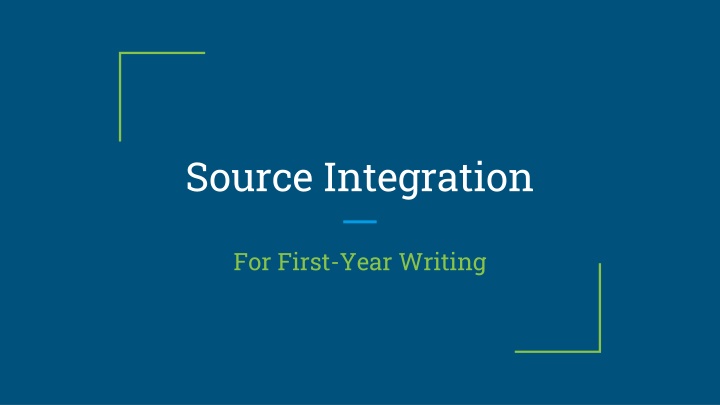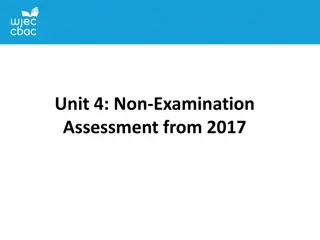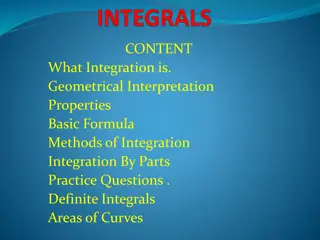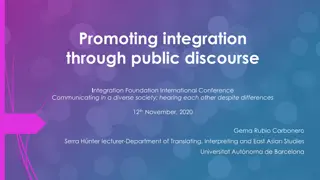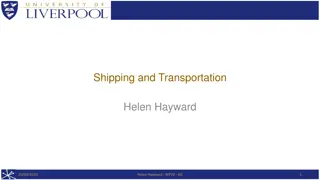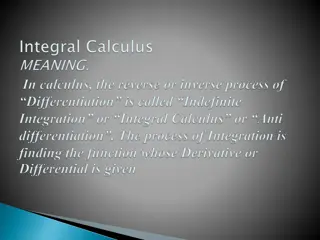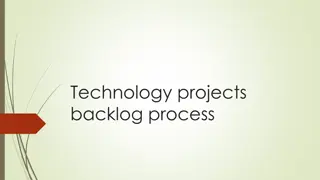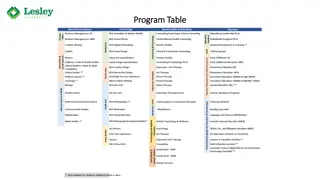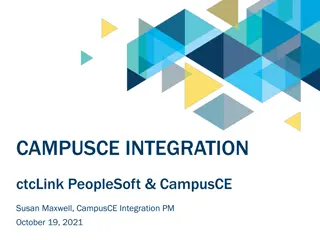Effective Source Integration for Academic Projects
Establishing the right sources for your academic work is crucial. Evaluate the credibility of sources, consider various ways to interact with them, and learn to employ sources effectively in your writing. Understand the distinction between using sources as evidence and engaging in a conversational style.
Download Presentation

Please find below an Image/Link to download the presentation.
The content on the website is provided AS IS for your information and personal use only. It may not be sold, licensed, or shared on other websites without obtaining consent from the author.If you encounter any issues during the download, it is possible that the publisher has removed the file from their server.
You are allowed to download the files provided on this website for personal or commercial use, subject to the condition that they are used lawfully. All files are the property of their respective owners.
The content on the website is provided AS IS for your information and personal use only. It may not be sold, licensed, or shared on other websites without obtaining consent from the author.
E N D
Presentation Transcript
Source Integration For First-Year Writing
Before you begin, make sure you have the right source! If you need to select your own sources, use recommended research techniques to find the best texts for your project Evaluate where the source comes from - who published it, who wrote it, who else is reading it? Make sure you have the right genre (type of source) for your project Look for evidence and citations (if appropriate) Check the source s information against other sources
Consider How to Interact with the Source There are many ways to consider, use, and respond to ideas from sources Consider your project (your paper, presentation, etc.), its purpose, and how the source you re looking at can contribute to it. For example, you may be used to using source information as an authority in your writing to help you augment or verify the information in your project. > But this is not the only way! In fact, you should move beyond this
Some Ways to Employ Sources in your Writing: To add evidence (authority) to writing To show views that support or contradict your own To use someone else's particularly good articulation of an idea To build upon what others have said on your topic and take the ideas in a new direction To respond to what others have said on your topic, perhaps with a different perspective
Some Examples of this in Action: Report Style: Reliable source says "This is true. Facts!" (citation 12). Now we know the fact. Appeal to Authority: Reliable source says "Something that agrees with me!" (citation 12) So we can see I am right. He Said it Better: Reliable source says "A well-written version of what I want to say." (citation 12) - Letting sources speak for you without adding new information. Conversation Style: This author says "Something similar/different to what I'm saying." (citation 12) However, I am saying something a little different. In response or analysis papers, you should usually aim for conversation style
Evidence vs. Conversation Using a source as evidence means that you are accepting the source as objectively true and you expect your audience to do the same. You use this source to prove a specific fact or point. This style is sometimes appropriate for objective info. Using a source for conversation means responding to what an author says, and explaining to the reader where your project (essay) is similar or different from their approach. This style is more appropriate for subjective ideas.
Engaging in Conversation Not all sources can be used in conversations or responded to - it needs to be a source where the argument or observation expressed is at least somewhat subjective (can be seen from multiple angles). You must first accurately understand what the author in your source is trying to say, and then respond to it fairly.
So, how do you Integrate Sources?
Step 1: Read Critically Use critical reading and annotating techniques to find the most relevant passages for your project. Source quotations are your evidence - make sure you choose the right example to demonstrate the point you re making. As you read the source, highlight or underline passages that may work best for your project. Make sure not to take a passage out of context; represent the source author s ideas faithfully
Step 2: Introduce the Source In many research-based projects, your evidence will appear more credible to your readers if you introduce each source to demonstrate its provenance and reliability. This may not be appropriate for all genres - if it s not right for your project, skip to step 3. Example introduction before quotation: In Misinformation: Susceptibility, Spread, and Interventions to Immunize the Public published in Nature Medicine, Sander van der Linden (2022) asserts that misinformation is a danger to public health.
Step 3: Use a Signal Phrase Signal phrases are appropriate in almost all genres, because they signal to the reader that source material is coming up, and emphasize who is responsible for the information therein. Signal phrases also help clarify how different sources relate to one another (who agrees or disagrees with whom). By attaching the author s name to the source passage, you make it easier to keep track of the conversation between sources. Example signal phrase: Van der Linden (2022) explains that the politicized nature of many public-health challenges suggests that people also believe in and share misinformation because doing so reinforces important socio-political beliefs and identity structures. (p. 6). Note the verb in bold above. You should choose an appropriate verb carefully; examples are on the next slide.
Step 3: Signal Phrases - Suggested Verbs Implies Suggests Observes Notes Adds Shows Demonstrates Claims Argues Asserts Insists Proves Acknowledges Believes Confirms Disputes Disagrees Confuses Complicates Expands Evades Impugns Reveals
Step 3: Signal Phrases - Examples Gershwin (2012) observes that while the song of cicadas often evokes the lazy haze of summer, when too many are in close proximity, the noise they make can become so deafening that any tranquility they might have created instead becomes a maddening cacophony (p. 7). Martinez (2018) argues that pollinators such as butterflies and bees are so essential to life on earth that anyone with stewardship over even a small piece of land should cultivate and protect the plants they depend on, such as dandelions and milkweed (p. 236).
Step 4: Citation Any specific ideas or information you pulled from sources to include in your project must be cited. If you write the same words in the same order as they appear in the source, you must enclose the passage in quotation marks. Failure to do either of these things is plagiarism! This usually doesn t apply to general knowledge, such as Who won the world series in 2018? or The latin name of the monarch butterfly is Danaus plexippus. If you aren t sure if you should cite something, ask your instructor
Step 4: Citation - MLA In-text citations MLA in-text citations include the page number the passage appears on, and the author s last name if you didn t mention it in the signal phrase (but it s almost always better to state it in a signal phrase). MLA includes the page number ONLY, with no abbreviations. Examples: Williams insists that pollinators should be protected in every ecosystem (25). Jones concedes that while monoculture yards may make residential areas appear neater, biodiversity is always better for the native environment (16).
Step 4: Citation - APA In-text citations APA in-text citations include the date of publication in parentheses after the author s name, which should be in a signal phrase, and the page number in parentheses following the quoted passage. NOTE that APA uses p. before a single page number or pp. before a range of pages. Williams (2014) insists that pollinators should be protected in every ecosystem (p. 25). Jones (2017) concedes that while monoculture yards may make residential areas appear neater, biodiversity is always better for the native environment (pp. 16-17).
Step 5 - Works Cited Page MLA: Van der Linden, Sander. "Misinformation: susceptibility, spread, and interventions to immunize the public." Nature Medicine 28.3 (2022): 460-467.Google Scholar. 15 June 2022. APA: Van der Linden, S. (2022). Misinformation: susceptibility, spread, and interventions to immunize the public. Nature Medicine, 28(3), 460-467.
